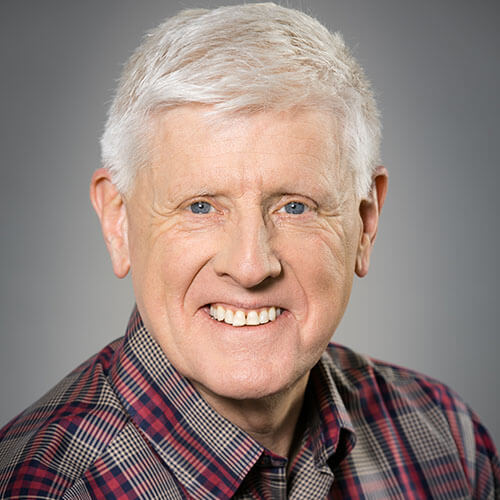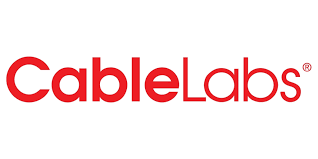
Collaboration: The Industry's Superpower


Chris Lammers is currently COO Emeritus & Senior Executive Advisor for CableLabs leading special projects and initiatives, including the integration of SCTE as a key part of CableLabs, and support of relationships across industry associations including ACA Connects, CCSA, the Emma Bowen Foundation, NCTA, NCTC, and WICT. A trusted and respected industry advocate, Chris serves on the Board of Directors of The Cable Center and was selected for the Cable TV Pioneers class of 2021.

Q&A
Diane Christman caught up with Chris to discuss collaboration which is the cornerstone of our industry and supports our ability to advance innovation.
Chris, why is forging partnerships an important building block of innovation?
A distinctive feature of our industry is its willingness to collaborate. This is the basis upon which CableLabs was formed in 1988 to acknowledge strength-in-numbers. Led by John Malone, this effort identified the opportunity for the industry to come together and develop technology across the U.S. and Canada. Today, that effort spans the globe. CableLabs’ members have been working together to innovate for nearly 35 years. The benefit of strength-in-numbers means moving the industry forward through shared experiences, innovation, and technical and strategic skillsets. The “Malone Letter,” as we call it, invited cable operators to join CableLabs with the intent to plan and fund critical R&D projects to be supported only on a cooperative, collaborative basis. The role of CableLabs is to innovate and facilitate the transfer of relevant technology to member companies and suppliers – this is what we do to push innovation forward to advance the industry. The objective is two-part: develop the technology, and then get it out in the field to advantage customers whether they are consumer, business, or otherwise. Malone’s promise has been realized many times over.
CableLabs brought people together for a “think group” during the pandemic. Tell us more about how the industry shifted in response to this crisis.
We are proud of the incredible efforts of our industry to recognize the unprecedented demand on our broadband networks as we literally started living our lives online – working, learning, socializing, recreating, shopping, entertaining – all from home. In March 2020, operators across CableLabs’ global membership formed the Network Impact Operators Group, meeting weekly to share experiences and develop best practices on the impact of COVID on our networks. The topics we discussed included upstream and downstream traffic, peak utilization, understanding applications and their impact, and network and bandwidth management. Over time, this evolved into a more wide-ranging discussion of architectures, operations, and strategies. The result: 18 consecutive months of member engagement and support for sharing experiences, solutions, and innovative initiatives to assure our broadband networks remain flexible, resilient, and able to adapt to the unparalleled increase in demand for bandwidth and the applications our customers use. CableLabs demonstrated its unique ability to bring the global cable industry together to share and solve common – and genuinely unprecedented – challenges. This was only possible due to the commitment of operators across the world to collaborate in support of one another and our customers.
What are some examples of how the industry has collaborated for technological advancement?
DOCSIS technology is an example of the unprecedented success of the industry working together. This is the broadband technology that supports the cable industry around the globe. The success of DOCSIS has been dependent on not only CableLabs and its members, but also the vendor community. Working together, CableLabs members have been delivering unparalleled broadband service through product interoperability. The DOCSIS program began in the late 1990s and continues to evolve with an ever-increasing set of innovations – most currently with DOCSIS 4.0. CableLabs' and our members' success does not turn solely on DOCSIS. Recent technology innovations have been developed for fiber optics, broadband wireless, fixed/mobile convergence, security and privacy, virtualization, and energy efficiency – all contributing to the industry’s commitment to the 10G platform. The 10G platform is a combination of technologies that will deliver internet speeds 10 times faster than today’s networks and 100 times faster than what most consumers currently experience. Not only does 10G provide faster symmetrical speeds, but also provides lower latencies, enhanced reliability, and better security in a scalable manner. This showcases our industry working together with vendors to develop, deploy, and successfully meet customer expectations based on strength-in-numbers, the synthesis which is uniquely characteristic of this industry. We have been remarkably fortunate through the entire history of this industry, not just in the tech and innovation space, but more broadly across what we do. This “superpower” is in large part the reason for this industry’s continued success. We have a large ecosystem of cable operators working with other stakeholders that fall into this collaboration construct including, manufacturers, suppliers, universities, and individual innovation companies. We have a co-innovation program where we work together with these groups to build new technology solutions, and we have our working groups where members and vendors collaborate on advancing technology.
How about partnerships with those outside of the traditional fixed line connectivity industry – how can we cross-collaborate to accelerate progress?
A really great example is our Convergence Council. Companies from outside of our industry have joined us to help build the architectures to bring convergence to life. The Convergence Council is a constellation of a large ecosystem in the mobile universe including the likes of Facebook and Microsoft. This is another example of expanding this collaboration beyond our industry to other stakeholders critical to the success of a particular technology, in this case, mobile. We also have a Mobile Convergence Committee made up of operators focused on what we do to converge our fixed networks with wireless networks, and either fixed wireless or mobile as we march into the future. Our members can take advantage of CableLabs' own wheelhouse in each of these areas: mobile as it fits the industry and obviously fixed networks. What we can accomplish as an industry to integrate these technologies and networks in a more seamless fashion allows for our continued ability to meet consumer and business demands with efficient networks that talk to one another in a very cohesive way. The industry is also committed to its 10G initiative. Currently, there are not a lot of applications that take advantage of 10G. CableLabs is running the 10G Challenge to encourage and fund ideas from all industries that will improve the way we live, work, learn, and play. We’re bringing in judges from Mayo Clinic, Corning, and Zoom to help evaluate this new realm of services and applications. Imagine what can be realized with more broadband such as machine learning, artificial intelligence, and virtual reality, or healthcare for remote surgeries. The vision is to get everything in place so operators can deploy 10G to enable all these new emerging experiences that rely on the broadband network and have the potential to enrich and improve our lives.
